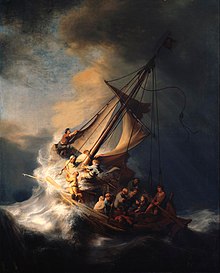
At art exhibits I often hear, “what else do you do?” The implication is that an artist cannot make a living without working a second job to support their artaholicism. I know this is true for many of my fellow artists. Some of them are quite good, but they are not full-time artists. In the modern era it is often necessary for everyone in a family to work. Having a second job brings in income and allows many people to practice art in their spare time. At times when it is difficult to find work, you are fortunate to have either job. Many people have art as a hobby and this is a great arrangement. The benefits of having the income from a second job are obvious. However, for the artist wanting a successful fine art career, having the second job could reduce their chances of success.a
1. You cannot devote the time needed for your art career
If you are to improve as an artist, you must put in as many hours as possible. This means painting late into the night, waking early when the light is best, travelling to competitions and events, exhibitions, framing paintings, preparing surfaces, meeting with collectors, studying art, attending workshops, experimenting, sketching, attending life drawing sessions, and marketing yourself. I know many people who did not study art until their retirement and wish they had started earlier.
2. You are not as motivated because you have a safety cushion
Many of the most famous artists in history had to sell their paintings to pay off debts and died penniless. They poured all their passion and energy into their art. They were driven to push their art and constantly improve. Hunger is a great motivator. When you have the security of a second income you will not be as motivated to succeed. In the back of your head you will always know that you have a plan B to fall back on.
3. Your reputation as an artist suffers
To pay for part of my art education, I delivered pizza. Now imagine if I did the same to supplement my art career. If you were a collector and you recognized the artist as your waiter or pizza delivery guy, would you be as inclined to pay the money that the art is worth? It makes it hard to establish your identity as an artist when you have a conflicting career. Part of this is the problem of role reversal. The artist/collector role is much different than vendor/buyer or servant/client roles. Would you respect your governor or mayor as much if they were doing your dishes? Can you picture Rembrandt waiting on your table?
[caption id="attachment_159" align="aligncenter" width="600"]

Artist Christopher Reid accepting award for his painting "Southport"[/caption]
4. You cannot get the time off to participate in events
I travel all over to compete in plein air competitions and juried exhibitions. I have to choose which events don't conflict with each other and which ones I can reasonably travel between. I don't have to get time off from another job. If I did, I would only be able to compete in a few events a year. I know several artists who can't attend events they would really like to because they cannot get time off.
5. You make less income from each job than you would if you focused on just one
If you paint full time, you earn X ammount of dollars. If you work a job as a doctor, you earn Y. If you work X and Y, you are less successful in both and you will find that X+Y does not equal Z. It is like reverse gestalt theory. Say you earn $50,000 as an artist if you do it full time. If you do it only half of the time, you will make much less than half of that – more like $15,000. If you are not already skilled at art and marketing your art you might not earn anything. When schedules conflict and you have to take a day off from one job or the other, most people will work the job with the dependable income.
Assessing your career
If you are working a job to pay for your art career, you should do an assessment. Where do you hope to be as an artist in 5 years? Are you willing to make sacrifices to get there? Where are your skills weak? What do you need to do to improve? How can you reach more collectors? What would you do differently if you had more time for your art? Is art really what you are passionate about, or is it just a hobby?
Choosing a side job
If you still must work a second job, try to make it art-related. Working at a frame shop, gallery, or art supply store at least exposes you to art during your work. A second job at the beginning of an art career can help you build confidence and help you afford art supplies.
Making the decision
Eventually you need to choose whether you want to be a full-time artist or a hobbyist. Being a full-time artist is not for everyone. I think it is awesome to see people creating art for fun in their spare time. If you decide to do it full-time though, you must give it all your effort. Many of the past master artists may not have been wealthy, but perhaps they were happier because they were doing what they love? Isn't that more important than having a bigger number in your bank account? What would your art become if you gave it your full concentration? You will never know until you do.























